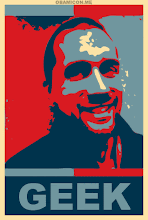INTRO - POSITIVE AND NEGATIVE
Collaborative Learning - A positive concept, but according to Connie, it immediately evokes some negative terms. "No return", "Gen Y", "Hype", and so on...certainly holds truth, and certainly is one of the reasons we are perpetually held in a state of approval seeking.
NEW VERSUS OLD LEARNING CULTURE
Traditional
- Control
- Protected Communication
- Tethered
- Borders
- The "Place" for Learning (LMS)
- Programs, Delivery, and Measurement
- Learning Events
- Driven by Learning Dept
Modern
- Reliniquish
- Transparent Communication
- Mobile
- Borderless
- Facilitator/Enabler
- Anywhere/Everywhere
- Undefined by Events
- Driven by the Learner
HOW DID MOTOROLA SOLUTIONS LAUNCH THEIR COLLABORATIVE PLATFORM
Identify Use Cases
The core development team looked at the cases...ultimately, if people collaborate more, it will increase productivity. I think that goes without saying. When you collaborate, you get better. Smart Business Sense, Streamlines and Increases Communication Effectiveness, Compounds the Power of Knowledge, and Causes Connect & Flow of knowledge. Alignment of Business and Performance Objectives aids, as well.
The process of identifying these use cases is simple: SME Identification --> Managed Business Area --> Work Team Enablement --> Dynamic Information Sharing --> Personalized Information Flow.
It's not about how to use your collaborative platform, either...it's about how to use it to impact your team's performance. Also, with regards to the collaborative platform, there are specific roles required for that platform: Executive Leaders, Functional Strategy Lead, Community Manager (censor, filter, monitor, stimulate), Advocates (cheerleaders), Users, and Support Team.
"Every user is a teacher...can help you teach users through use themselves."
Learning Solutions That Support Use Cases
5 TACTICS TO ENGAGE THE LEARNER
1.) Power to the People - Users/employees post a question, as an organization post once...let "them" get in there and get dirty. This tactic touches on Relinquishing Control, Transparent Communications, and being Driven By The Learner.
2.) Curator vs Creator - In some of the cases in Connie's situation, it's not about the training solution specifically, it's about being able to find what they need (and allowing the employee to play a part in redirecting 'lost souls'. This tactic touches on Facilitator & Enabler of Learning and Continuous Learning.
3.) Just-In-Time - If people don't see answers, they're not going to come back. (Awesome point). Having a collaborative platform that is up 24/7 allows for that sense of immediacy for the learners. This tactic touches on Mobile, Borderless, Continuous Learning, and Driven By The Learner.
4.) Adapt & Practice - You have to 'try'. You have to be willing to not get it perfect, and you have to be willing to try new things. This tactic touches on Transparent Communication, Facilitator/Enabler of Learning, Rich Environments, Continuous Learning, and Driven by the Learner.
5.) Motions vs Motives - Pay attention not just to what people need to know, but why they want to have that knowledge gap filled in. When in need, they will listen/tune in. And don't just focus on occupational needs...if you can tie in to out of work, it's even more effective.
5 WAYS TO MEASURE THE IMPACT OF COLLABORATIVE LEARNING
Nice to hear about all of this, but is it 'moving the needle'. That's the million dollar question.
1.) Traditional Methods Still Apply - Use paper surveys, use focus groups, break out the email form...they all will still be data.
2.) Vitality Reports - Behavior statistics are important, and those stats should drive actions in your organization.
3.) Have You Asked? - Face to face, totally random...just ask. You'll be surprised at how much people will like to share.
4.) It's Happening - Sometimes, unorganizedly, you just have to grab the data and give it a look. When the users are answering other people's questions and taking part, that's proof of effective learning. Also, let them know that the business is benefitting, as well. Invite community managers (social media refs) to share success stories.
5.) Know What To Look For - Learning Measurement (which should be identified early on in the process) starts at the planning stage.
CONCLUSION
You just have to jump in...it won't be perfect. But, at the same time: Don't jump in. Just because everyone else is doing it doesn't mean it's right for your gig. How are you training and how will this work with it? Experiment with it, play with it, run with it and see what happens.
Subscribe to:
Post Comments (Atom)


No comments:
Post a Comment